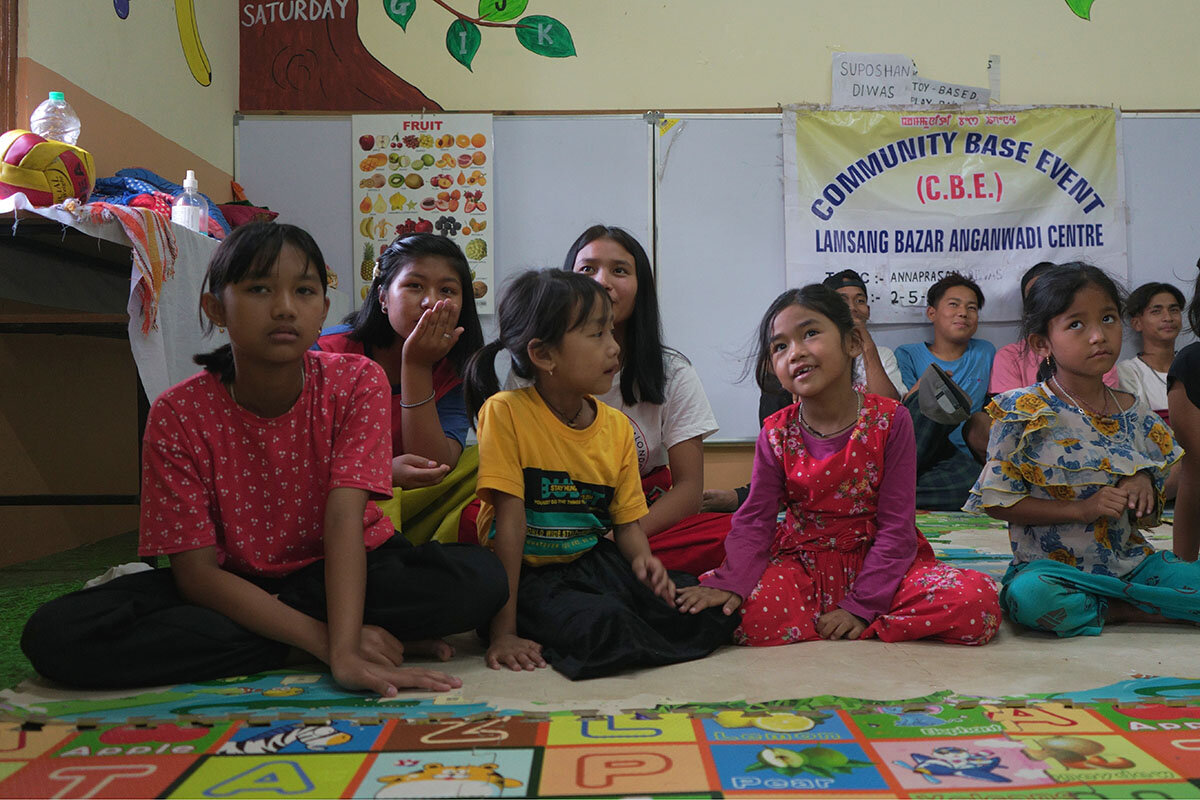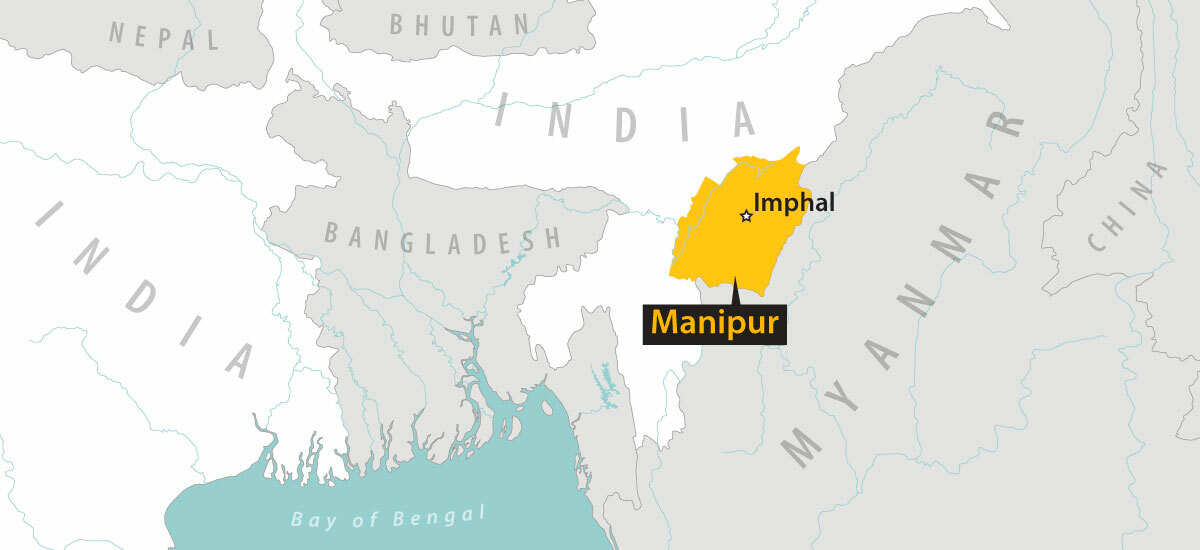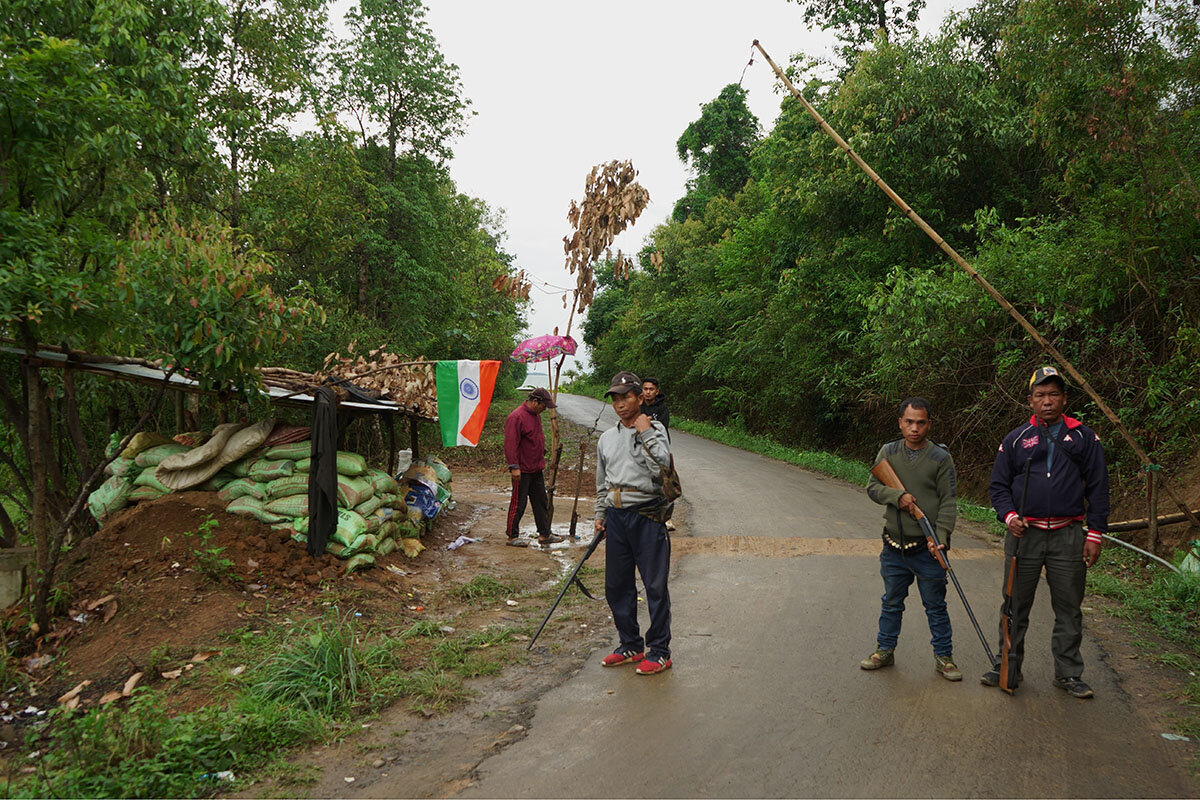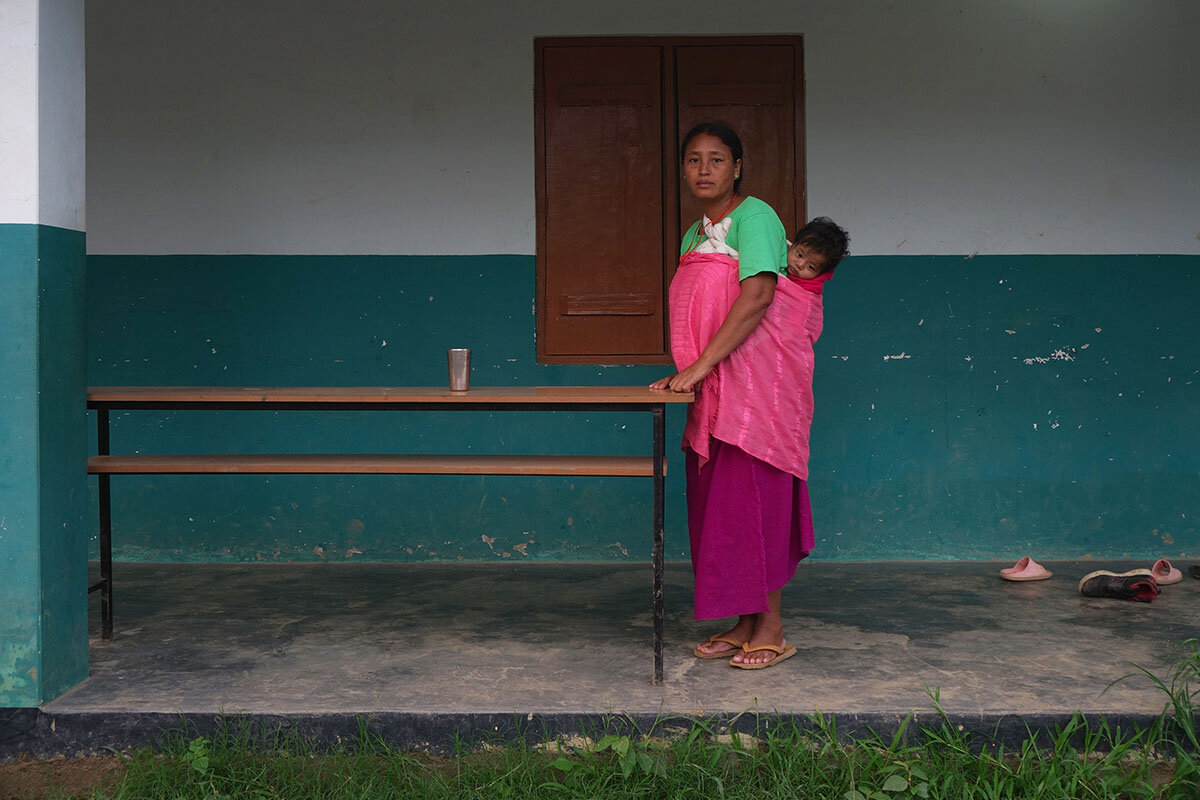India’s Manipur has spent months on the brink of war. Is there hope?
Loading...
| Imphal, India
Sunset brings anxiety for many in Manipur, a northeast Indian state on the brink of civil war. Night is when most of the fighting takes place, the calm shattered by sounds of gunshots and the sight of buildings set ablaze in the distance.
But on the outskirts of the capital, a Manipuri folk song emanates from a schoolhouse. Here, children who’ve been separated from their parents sing in unison every evening, bringing a modicum of joy and hope for the return of peace.
It is one of around 350 makeshift relief camps that have emerged since ethnic violence erupted in Manipur more than two months ago. At least 140 people have been killed and 60,000 displaced as angry mobs burn through homes, shops, and churches. Yet amid the chaos, there are helpers.
Why We Wrote This
A story focused onA relief camp for displaced children in India’s violence-wracked Manipur state shows the challenges of keeping hope alive amid crisis.
Around 20 young volunteers have turned this particular government school into a haven for dozens of children, ages 1 to 12, a few of whom are accompanied by a relative. The volunteers – many who are students themselves – work hard to provide more than the basic necessities. Through music, games, and other activities, they hope to offer displaced children a true refuge.
“Everyone was trying to help” when violence broke out, says Roosevelt, a volunteer who, like many in this part of India, goes by only one name. “We provide them a safe space, food, medicine, and, more importantly, what children need the most ... an escape from the ongoing war.”
A state divided
In May, long-standing tensions between the state’s Kuki tribal minority and the Meitei majority came to a head when the High Court ruling granted the latter “tribal status.” The order entitled Meiteis to economic and social benefits once reserved for the hill-dwelling minority groups, triggering pitched battles between the two communities; 60 people were killed in an initial two-day rampage, and violence has continued to spread.
Manipur has essentially been cleaved in two, with both sides forming their own militias to drive out members of the opposing community and maintain control of their territory. Some members of the vigilante groups patrol their areas wielding automatic and double-barrel rifles, while others keep vigil through sandbag-walled bunkers.
The central Indian government has deployed thousands of military and security forces to contain the violence, but peace remains elusive.
Meanwhile, Roosevelt and his friends have spent most of their time in the relief camp, caring for Meitei children whose parents are either being treated in hospitals or have returned to their villages to join armed vigilante groups. Volunteers start the day by making arrangements for the food, water, and other essentials, before engaging kids in games and music activities. They also do their best to provide academic lessons, with subjects varying based on the volunteer teachers’ expertise.
“The aim is to keep them busy, but also they should not miss on their studies,” says Roosevelt, a Ph.D. student researching Mathematics at Manipur University in Imphal when the fighting broke out. “We do not know how this conflict is going to last.”
More volunteers from the neighborhood have been joining Roosevelt’s group, including Khomjam Samita, a mother of two young girls. She comes every day at 8 a.m. and leaves after 8 p.m.
“When I learned about these kids, I could not hold back. I clean and cook every day here, along with other women,” she says. “I can imagine how difficult it must be for these kids to live without their parents. We are only trying to make it easy for them.”
One day at a time
While the young volunteers keep the camp’s children occupied, elders look after the babies and pray for peace.
Echantomni – who also goes by one name – paces the schoolhouse halls carrying her 15-month-old grandson in a shawl fastened to her back.
“His mother is ill, and that is why she is in a relief camp ... near a health facility while his father is protecting the village,” she says. “I have no choice but to stay here with him.”
The most difficult part is when the infants are hungry.
“We feed bottled milk, but he is not used to it,” laments Echantomni, who, like other caretakers, has been struggling to find baby food. “But I am happy. At least we are at a relatively safer place.”
Relief camps in Manipur largely depend on donations. But volunteers say it is becoming increasingly difficult to access necessities, with state-imposed curfews, internet blackouts, and ongoing violence disrupting the flow of supplies.
India’s main opposition leader, Rahul Gandhi, who recently visited the violence-hit areas, also highlighted poor conditions in the relief camps.
“I went to the camps, met people from all communities,” said Mr. Gandhi during a press conference. “One of the things that I want to say to the government is that the basic amenities in the camps need to be improved. The food needs to be improved; medicines need to be supplied.”
Echoing concerns shared by relief workers across Manipur, Roosevelt describes managing shortages of water and other essentials.
“There is no cooking gas available,” he says. “We collect firewood and use it, [but] even firewood is not easily available now, because of restrictions.”
There is little he can do to improve the state of supplies. Instead, the challenge has been ensuring these stressors don’t extinguish the sense of hope that volunteers have worked to preserve.
As another evening approaches, the children gather in a classroom. The walls are plastered with colorful drawings of their favorite anime character, a robotic cat named Doraemon, while a volunteer strums his guitar by the whiteboard. The children start to sing, and everyone’s face lights up – they’ve made it through another day.
(Editor’s note: The original version of this story's map contained a misspelling of Bangladesh.)










